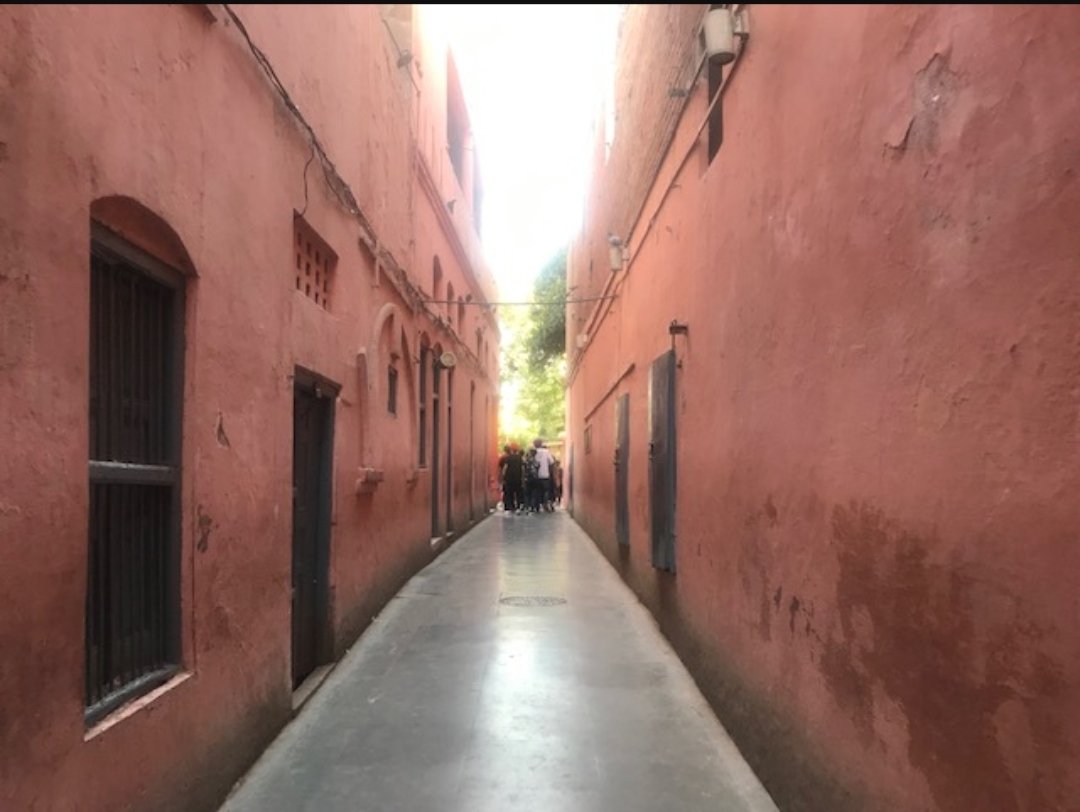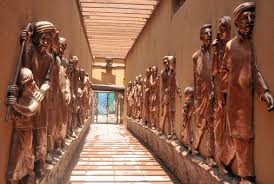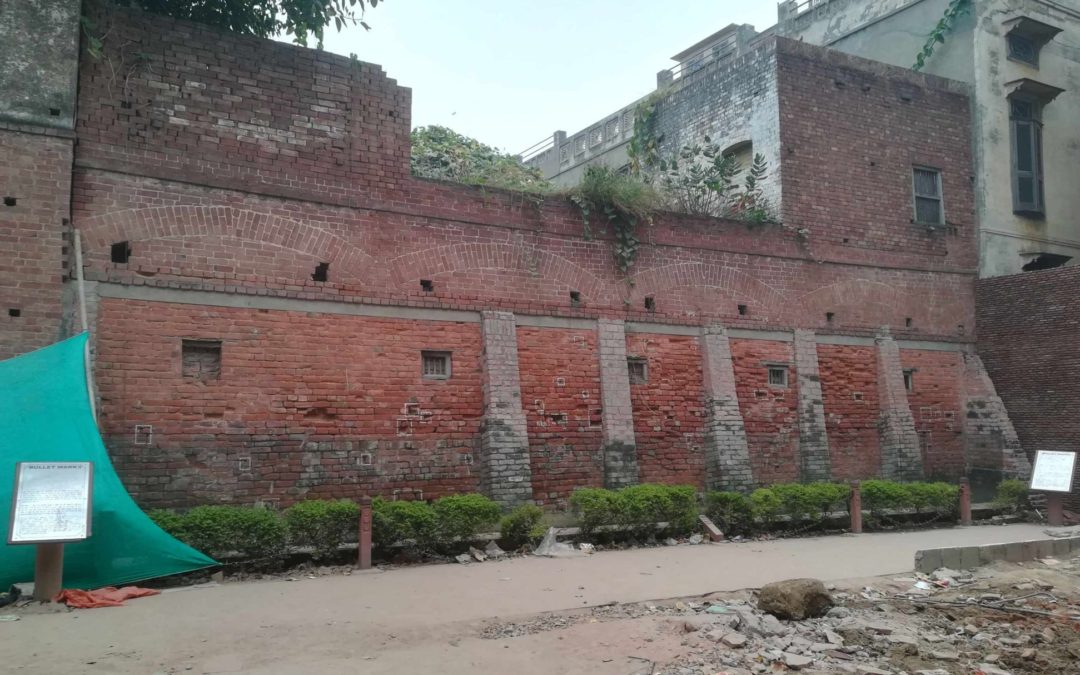Wall at Jallianwala Bagh
(Image courtesy: Tiggy Allen)
Studying history gives us the skills and tools to analyze and build relationships, networks, and processes that have the power to make things better. To gain these skills, history students need to conduct experiments to observe, analyze, corroborate, contextualize, and make meaning. And so, this makes historical memorials and sites the laboratories for history learning!
Between 1984 and 1994, historian Pierre Nora popularized a concept, as part of his seven-volume work, to call places and locations that carry memories of communal or national importance – “lieux de mémoire” or the “sites of memory”. The concept of sites of memory refers to any place or object vested with historical significance in the popular collective memory, such as a monument, a museum, an event, a symbol etc. These historical sites represent stories of events and people through the embodiment of objects and marks they hold. Observing and interpreting these tangible primary sources allows observers (students) to make meaning, either finding their own space in the collective memory or understanding the identity and motivations of another community. But what happens to this meaning-making process when these sites of memories are altered to be preserved, as has happened in the case of Jallianwala Bagh?
Here, it is perhaps pertinent to ask: Why do we preserve? Traditionally, the goal of historical preservation has been to retell significant events and stories of the past for new generations to confront and experience. This involves being acutely aware of and sensitive to stories and collective memories of the place to ensure the preservation processes protect, or better still enhance, these memories. The renovations at Jallianwala Bagh unfortunately reflect the absence of these sensitivities.
Why is historical preservation done? History, and the historical sites where histories are made and represented, are biased. And teaching and learning history will contain some degree of inaccuracy. This is because they reflect the perspectives and ideologies of the group who were the victors, and those who recorded the events. Spaces, and the objects contained with them therefore carry the power for new interpretation and meaning-making – if one allows for that to happen. Jallianwala Bagh is a memorial site of one of the most gruesome massacres to occur in the history of Indian independence struggle. It is a place for solemnity and remembrance. The latest preservation or renovation (a more apt word for this case) of the Bagh feels like a distraction, and increases the gap further between the actual events and their perceived understanding.


Corridor before Renovations.
(Image courtesy: Kim Wagner, Twitter)
Corridor after Renovations
(Image Courtesy: Kim Wagner, Twitter)
How do you contextualize experiences of horror for students at this site of memory when murals of cheerful folks cover the narrow alley that British troops marched down, blocking the exit of peaceful protestors in April 1919. How do you ask students to observe and interpret actions of tragedy when a key primary source, the martyr’s well (shahidi khoo) – in which people are reputed to have thrown themselves to avoid the bullets – has been covered and painted pink to look aesthetically pleasing? How do you ask students to imagine and empathise within the mise-en-scene created by the park, the surrounding walls, the single entry and entry point (a new exit point has been created in this renovation), and the well when a sound-and-light show creates a flashy and visually enticing but irreverent and unrelatable story instead?
Historical preservation of a site is entwined with the interpretation of the site’s memories and stories. Preservation is necessary, but it is ease of access and interpretation, not aesthetics and entertainment, that should be priority. The latter is bound to increase the void of inaccuracies as teachers and students try to understand and analyse historically significant past events. At this moment in our global history, we have to work towards creating better meaning-making, especially in developing perspective and empathy, rather than pomp and show of history.
About
Garima Sharma leads the education programming at ReReeti Foundation. Her interests and professional experience revolve around instructional design for informal learning spaces and content development for children and young people. She is curious about ways that science and social studies can come together to make learning more relevant and experiential for young learners.








Recent Comments